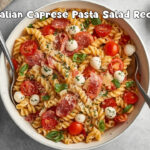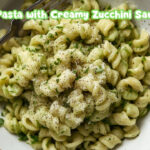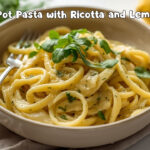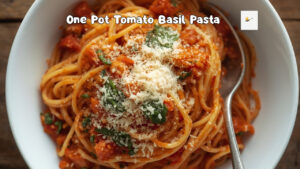Table of Contents
ToggleHave you ever thrown away leftover pasta and think about, “is it really, can you compost pasta?” You’re not the only one who doesn’t know much about composting! Many people aren’t sure if pasta belongs to the composting food. We all know fruits and veggies are okay, but pasta is yet confusing. The good news is, yes! You can compost pasta. You can turn your pasta scraps into healthy soil for your garden if you do it the right way.
Bokashi composting is a great option to try—it’s not too difficult and can really help reduce smells while speeding up the breakdown of food. Bokashi bins keep the bucket sealed during the process, which helps reduce odors and boost decomposition.
While writing, the old saying “a little bit of learning is dangerous” comes to mind. Do you ever wonder about other right composting methods, like how can you compost pasta to avoid problems like bad smells or pests? Be mindful that pasta can be composted, though it’s not ideal for every compost system.
We’re all about food—whether its about growing or composting leftovers, I’ve got plenty of helpful stuff to get you started. Today, we will explore the topic of pasta composting, composting methods and useful composting tips. ‘Keep reading this simple guide; it will help you convert your pasta scraps into nutrient-rich soil.
How Can You Compost Pasta in the Right Way?
Besides from bread and rice, pasta is one of the most common foods with high production in the United States. Every year, almost people consumed over 5 billion pounds on pasta. This research shows leftover pasta is pretty common.
Whether you’re running a business or a householder, composting pasta is a good way to recycle it and helps to turn your garden soil into nutrient-rich soil. Composting is specifically aerobic decomposition of organic material and requires carbon, nitrogen, oxygen and water – the building blocks for soil life.
But since pasta isn’t a usual compost item, it can cause problems like bad smells or attracting pests, so it’s not recommended for regular compost piles.
Why You Need to Prepare Pasta Before Composting
Composting pasta depends on cooked vs uncooked, how they’re prepared and how properly managed.
If you want to try composting, whether it’s pasta or something else, there are a few simple rules to follow. Plant-based foods like fruits, veggies, and grains are great for compost because they break down fast and are full of nutrients.
The food scraps are most of it is a valuable resource for making a rich soil food source for growing plants, trees, fruits, vegetables etc. You can look at it as plants creating their food to create better growth to provide food for people. But, there are a few simple rules to follow; if it is just thrown in a garbage pile, it just attracts food for all kinds of pests and does nothing to improve the environment.
Preparing Uncooked Pasta
Raw pasta is more comfortable to compost because it’s dry and organic, which typically avoids pest issues. But be aware of weevils. Weevils like to eat dry foods like flour, cereal, pasta, and rice. If your pasta has weevils, kill these bugs before composting, this makes a trouble-free composting process.
Always crush uncooked dry pasta into small pieces in a food processor or mortar. This helps it break down faster after combining with moist compost materials.
Preparing Cooked Pasta
I must add here, though, that some food scraps shouldn’t be added to a compost pile. I learned that pasta with some particular sauces like meat sauce and penne alla vodka, which contain cream sauce, isn’t suitable for composting. Since they can attract bugs and animals like rats or flies you don’t want around.
A plain tomato sauce can be composted, as tomatoes are very acidic, so you need to neutralize it first. You can balance the acidity by adding something with a high pH, which also makes good compost for plants.
Right Conditions for Composting Pasta
Here are some optimal pile conditions; maintain them for successful composting.

- Pasta is high in nitrogen, a good composter. But too much quantity can make it mushy and smelly. Therefore, try to keep a balance of about 25–30 parts carbon to 1 part nitrogen. I always use this simple rule: I mix in triple the number of browns. Both cooked and raw pasta are rich in carbon and help feed the tiny organisms that break things down.
- You can add regular kitchen scraps, like fruit and veggie peels, coffee grounds, and even crushed shrimp shells, they’re excellent nitrogen-rich green ingredients. Yard waste like dry leaves, grass clippings and even shredded newspaper or cardboard are used as carbon sources.
- Keep your compost moist, but avoid excess water. Too much water can cause bad smells. If that happens, add more dry brown carbon materials.
- The compost bin needs air for proper decomposition. Turning your pile once a week is crucial. It helps in good compost, boosts the process, and also prevents it from clumping, getting smelly or slimy.
- Adding a little bit of pasta to your compost is okay. However, adding a whole pot can cause issues, as it sticks together and blocks airflow. It’s recommended to add small amounts at a time to keep it airy and allow the pile to perform well.
- While using hot composting, the temperature between 90°F and 140°F break down food waste rapidly and kills harmful bacteria. keeping your pile hot assure a quick, safer process. You can check the temperature with a long compost thermometer.
- Insects and rats are attracted to disclosed food wastes. Bury your pasta scraps deep in the middle of the compost pile where it’s hottest. And also helps them break down faster and keeps pests away.. For further protection, cover the pile or bin with a piece of wood or metal.
- If you have a lot of cooked food waste, consider Bokashi composting. It uses a fermentation method to break down food. It is the easiest way to compost things like rice and pasta.
What’s the Compost Time for pasta?
Apparently, pasta takes about 2 to 4 months to break down in a well-managed compost pile. It will compost faster if you:
- Cut it into small pieces
- Keep the pile warm, moist, and airy
- Mix it with other compostable items
How Pasta Breaks Down in Compost Pile
Mostly, people are not very aware of composting pasta, which is why it isn’t a common thing to compost. It can really change your compost process if it’s not prepared or handled the right way. Inaccurate preparation can cause more problems than help, like attracting pests or making bad smells.
Let’s look how pasta decompose:
Pasta’s Role in the Decomposition Process
Pasta breaks down well in a properly managed compost pile. Cutting or crushing it into smaller pieces helps it decompose faster. Smaller bits of any natural matter always break down quicker. This simple step can save you time.
However, don’t add too much cooked pasta at once because too much at once can throw off balance. By overloading the pile, the pasta starch can cause it to stick together and lead to bad smells from lack of anaerobic decomposition.
Heat and Humidity in the Compost
The pasta itself doesn’t directly raise the compost pile’s temperature. Tiny microbes break it all down in time. It’s only possible when these microbes are active and healthy; they keep heating the pile and speed up the composting process.
Cooked pasta has moisture, so it’s important not to add flooded and make the pile too wet. On the other hand, dry pasta needs water to break down, so it’s recommended to mix raw pasta with moist-nitrogen-rich materials like fruit and veggie scraps to help it decompose.
My experience
Hot composting is faster and can kill off pathogens, but if you are not adding decomposing products to your pile, then pathogens are not a concern. Some people talk about weed seeds staying in the composting process in a colder pile, but I have never experienced this. The only seed that has ever survived in my passive composting bins is sprouted avocado pits.
Microbial Activity
In composting, microbial activity relies on the right balance of carbon and nitrogen. Cooked pasta adds carbon, which feeds the microbes and helps in decomposing materials efficiently. Pasta with nitrogen-rich items like vegetable scraps, fruit peels, or coffee grounds boosts this process.
Moreover, cooked pasta with sauces, oils, or cheese can slow down microbial growth and attract pests. These ingredients can cause to upset the needed balance for healthy composting. It’s best to stick to plain pasta and leave out the messy, greasy leftover pasta dishes. Moisture and airflow in piles are also important for microbes activity, so keep the compost bin slightly damp and turn it regularly.
Common Problems to Watch For Composting Pasta
Does Composting Pasta Attract Pests?
Organic materials in compost piles are an ideal breeding ground for pests and definitely draw bugs. Bread and cooked pasta are mostly carbohydrates, and these types of food can attract flies, rodents, roaches, raccoons etc. Composting these items releases odors that may draw unwanted animals.
To avoid this:
- Bury pasta deep in your compost pile
- Keep a good mix of green and brown materials
- Maintain proper moisture levels; overly wet compost also attracts rats
- Use a covered bin or a Bokashi system
Does Composting Smell?
Pasta and other scrap foods can cause odors in your pile. These foul smell mainly arises from the breakdown of nitrogen-rich materials. When pasta decomposes, it releases volatile compounds like ammonia and sulfur-containing gases. Ammonia has a strong smell, while sulfur compounds create rotten odors. Odors often develop when compost piles become in anaerobic situations (lack of oxygen). It happens when the materials are too compact and have excess fluids. Too much pasta can also cause rot and stink.
To avoid try this:
- Add more dry materials (like paper or cardboard) if it smells bad.
- Make sure the compost has air and isn’t too wet.
- Regularly turn your compost pile
- Avoid adding meat, dairy and oily foods
Different Ways to Compost Pasta
Different composting methods are used for breaking down pasta. The Bokashi method is specially made to handle food waste, even pasta cooked with dairy or meat. This method makes it a great choice for composting cooked dishes.
Hot Composting

The hotter the pile, the faster the pile and both raw and cooked pasta can be used in hot composting.
Hot composting is an efficient way to break down pasta and rice quickly, as high temperatures (above 130°F) help kill bacteria and speed up decomposition. In this method food scraps are buried under dry materials like leaves or newspaper. For successful composting, you need regular turning and temperature checks. If it is done in the right way, it produces compost faster than other techniques.
Cold Composting

Cold composting is a slow, natural method where organic waste materials like twigs, leaves and food scrapes break down over time. It is an easy way to compost, relies on bacteria and microbes, already naturally present in the soil, to decompose food and garden waste. Unlike hot composting, cold composting does not require turning or aeration. You don’t have to do much; Leave it be, and it’ll slowly turn into compost.
But, if you’re adding cooked pasta to a cold compost pile, you need to be aware this method will attract more pests and rats and start to smell bad. Cold composting doesn’t get hot enough to kill harmful bacteria that might be in the cooked pasta.
Vermicomposting

Plain, cooked pasta in small amounts is safe for vermicomposting.
Pasta should only be added in small amounts without any sauces, oil, cheese, or meat. These added ingredients can create bad smells, attract pests, or even harm the worms in your compost bin.
Don’t overfeed your worms with pasta. Precious red wigglers need a variety of food, and too much starchy food like pasta can upset the balance in the bin and cause it to smell or go sour. If you notice any of these issues, cut extra food from your worm bin and add a neutralizer like crushed eggshells or garden lime to balance the acidity.
Break the pasta into smaller pieces before adding to your wormery. This helps it break down faster and prevents it from clumping together. Be sure to bury it under a layer of bedding or other compost materials in the bin. This process helps reduce odors and keeps flies away.
Bokashi Composting

You can put raw and cooked pasta with other foods into your Bokashi bucket without a problem.
It’s an absolutely amazing way to compost quicker and compost MORE. You can compost meats, fats, oils, and cooked food with bokashi, none of which you’d put in your hot compost pile or worm bin.
Bokashi composting is one of my favorite ways to make the most of extra food scraps. With a basic bokashi bin and using inoculated bran that helps with fermentation, you can break down food scraps before adding them to your soil.
Pasta Composting Safety Tips
- Wear gloves if handling moldy pasta
- Wash hands after composting
- Store pasta properly to avoid bugs
Using an Industrial Composting Facility

Industrial composting facilities operate at higher temperatures than home compost systems, which helps break down food waste quickly and safely. The high heat kills harmful bacteria and handles oily or greasy foods better than cold or worm composting. Many cities have compost programs. Contact your local compost center to ask if they accept pasta or cooked foods.
Why Composting Matters?
Composting is directly and indirectly benefiting our planet’s health, humans, and animals. Throwing pasta in the trash creates methane gas in landfills, which harms the planet. Composting is eco-friendly, reduce pollution, saves space in landfills, and creates healthy soil.
Less waste, healthier soil, stronger planer and cleaner air!
Composting pasta instead of trashing it, and you’ll be helping the planet without even trying too hard.
Due to the pasta size and types vary, such as spaghetti and macaroni, it’s best to break it into small pieces before adding it to your compost. This will speed up the decomposition process.
You don’t have the space for composters in your garden, but that shouldn’t stop you from composting. There are a few convenient options available to you like you can be placed right next to your kitchen bin. Making it all the easier to help the planet with leftover pasta!
Summary
So, the answer to “Can you compost pasta?” is yes, but with care.
Composting pasta depends on the composting methods. In cold composting, pasta should be added in small amounts and without sauces because oily and meat ingredients can attract pests and cause odors. In vermicomposting, plain cooked pasta can be composted if used carefully and buried well. Bokashi composting is best for both raw and cooked pasta, even with sauces, but excessive liquid can affect fermentation. Industrial composting is the safest and most effective way to compost pasta, as high temperatures break it down quickly.
FAQ About Can You Compost Pasta
Can bread and pasta be composted?
With moderation, correct management and keeping the quantity of the ingredients, you can compost bread and pasta.
Why does my compost smell so bad?
Compost pile usually smells bad when it’s too wet, lacks proper aeration, or has too much nitrogen-rich material. Food scraps without enough carbon-rich material, like dry leaves, also cause odors.
What food can you not compost?
Do not compost the following:
Pasta sauces
Meat
Pet waste
Fats and dairy
Ash or charcoal
How long does bokashi take to decompose?
In the Bokashi bin, pasta typically takes 2 to 4 weeks to ferment and then another 2 to 4 weeks to break down in the soil.
Why is my compost bin not heating up?
The composting bin won’t heat up if it lacks the right balance of green and brown materials, sufficient moisture, or proper aeration to support microbial activity.













